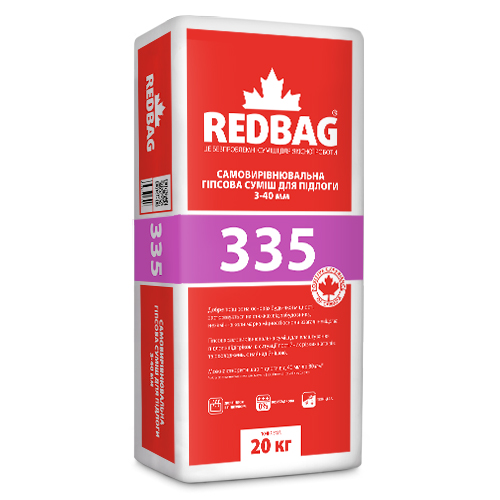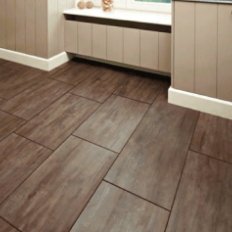The work should be carried out at a base temperature of +5 °C to +30 °C. The layer thickness per application should be from 3 mm to 40 mm. When arranging a floor with a thickness of more than 40 mm, it is necessary to add coarse aggregate of a fraction of 5 to 20 mm to the mixture in the proportion of 2 parts of the REDBAG 335 mixture to 1 part of the aggregate by weight.
When arranging a floor using the REDBAG 335 self-leveling mixture, it is necessary to follow the rules for arranging expansion joints: structural, insulating and shrinkage. Structural expansion joints should be used in structural joints of buildings and if necessary to reduce the effect of thermal expansion of materials. If such joints already exist in the base, they must be duplicated in the floor being arranged. Insulating joints are used to separate the mortar being laid from contact with load-bearing and enclosing structures (walls, columns, stairs, etc.), which can limit the deformation of the floor. Insulating joints are made using an elastic layer (foamed polyethylene, thin polystyrene foam). They are also used in places where the thickness of the base changes, in places where different floors meet, and to separate rectangular fragments of the base in rooms of complex geometric shape. Shrinkage joints should divide the floor into fields with an area of no more than 20 m2 with a side length of up to 5 m indoors, 16 m2 with a side length of up to 4 m in rooms with a heated floor, 12 m2 with a side length of up to 3 m on deformable bases ("floating bases" - heat and sound insulation). In corridors, shrinkage joints are arranged at intervals of 2 corridor widths.
Pour the prepared mortar mixture onto the prepared base and distribute it on the surface using a rubber measuring bar, notched trowel or other tools. To remove air from the freshly applied mortar, it is necessary to “roll” its surface with a needle roller (the length of the needles is 2 times the thickness of the layer). When installing a water heating system, fill the heating elements with water before starting work and do not drain for 28 days from the moment the floor is installed, and the mortar mixture layer should be placed 40 mm above the highest point of the pipe with the coolant. The thickness of the mortar layer above the electric mats should be at least 10 mm. The hardening time of the mortar depends on the temperature and relative humidity of the air. Under normal conditions, namely at a temperature of 20±2 C and a relative humidity of 55±5%, technological movement on the floor is possible after 6 hours. The next layer can be applied either in the period from 24 to 72 hours after applying the first layer, or after 14 days! The arrangement of coatings using water-based adhesives should be carried out after 24 hours - with a layer thickness of up to 5 mm, after 48 hours - with a layer thickness of 5 mm to 15 mm, and after 7 days - with a layer thickness of 15 mm to 40 mm. Provided that a heating system is installed in the floor, it is necessary to lay the tiles on elastic adhesive TM REDBAG. When using polymer adhesives based on organic solvents, the floor covering can be laid only when the humidity of the gypsum-cement floor is no more than 2% (approximately 7-14 days). To prevent destruction, the floor heating system can be turned on no earlier than 28 days after the floor is arranged.









